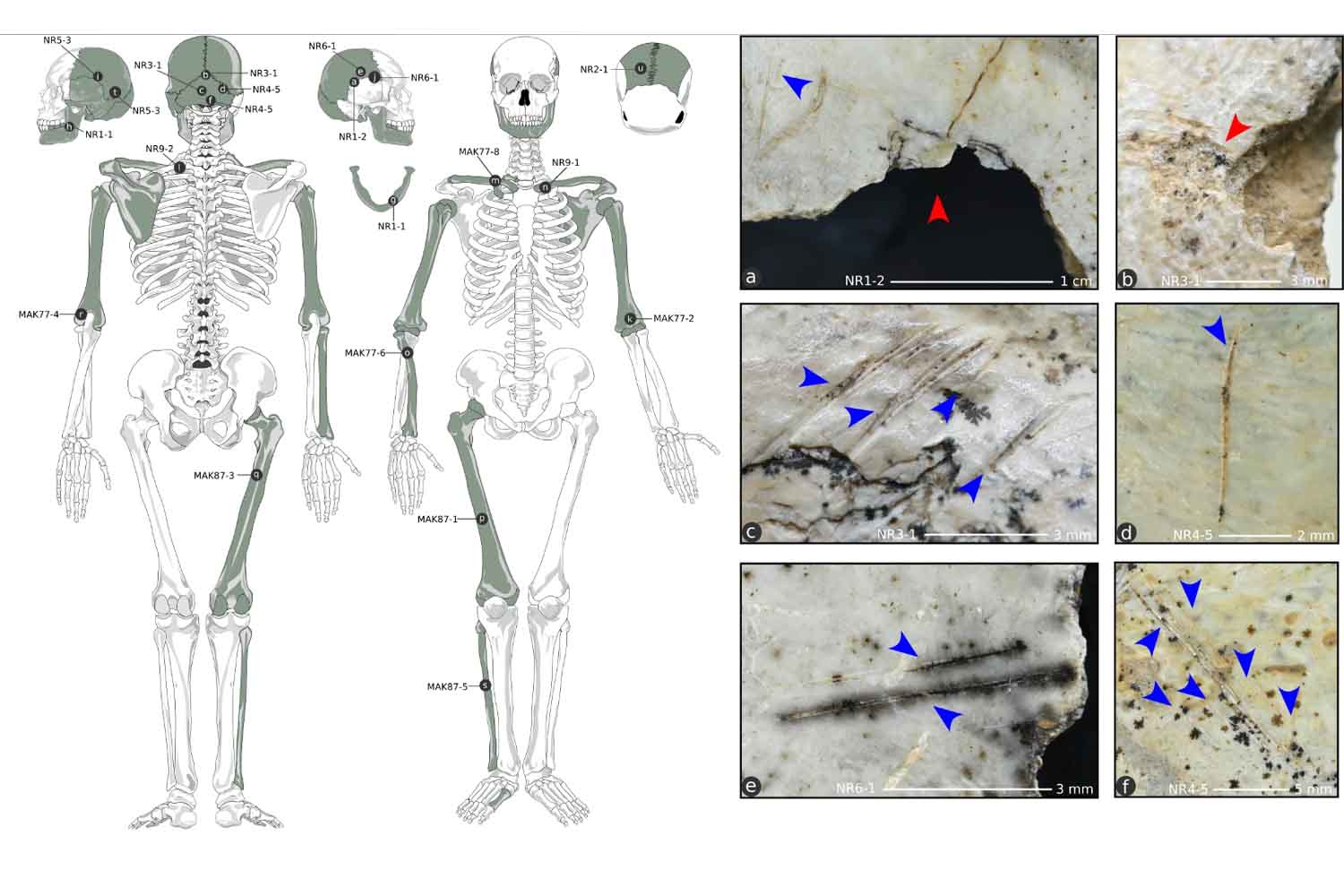Recent research reveals that Magdalenian communities practiced cannibalism, including the consumption of human brain tissue, providing new insights into their burial and ritualistic practices.

©Scientific Reports
In a groundbreaking study, an international team of researchers has uncovered definitive evidence that Magdalenian human communities, around 18,000 years ago, engaged in cannibalism—and not just in a ritualistic form, but possibly even consuming human brain tissue. This discovery sheds light on ancient burial and ritual practices during the Upper Paleolithic period, offering new insights into how these prehistoric societies might have lived and interacted with their environment.
Limited evidence of prehistoric funerary practices
Our understanding of the funerary rituals of Upper Paleolithic hunter-gatherers in Europe has long been limited, as archaeological remains from this period are incredibly scarce. However, a few well-preserved finds have helped us piece together some aspects of Magdalenian burial practices. The remains often show signs of ritualistic burial, with some bodies covered in ochre and surrounded by funerary items. Yet, many graves were missing parts of the skeleton, a phenomenon that was initially thought to be the result of animal scavengers.
Another theory, however, posits that the Magdalenian people themselves may have collected the bones as relics, either for ritual or symbolic purposes. But the frequency of missing bones, combined with the discovery of scattered human remains across multiple sites, suggests that some body parts may have been deliberately selected for specific reasons. Could these fragments be part of a cultural or ritual practice, rather than simply a consequence of scavenging?
Human bones: tools, art, or food?
It is well known that the Magdalenian people reused human bones to create objects—such as skull cups and even jewelry. Evidence of intentional bone manipulation is widespread: in France, for example, 40% of Magdalenian human remains show signs of cutting or incisions. But what did these modifications really mean? Researchers are divided. Some argue that the cuts were the result of post-mortem cleaning, conducted shortly after death for ritualistic purposes. Others, however, believe these marks are evidence of human flesh being prepared for consumption.
Cannibalism: part of magdalenian culture?
This ongoing debate has been further fueled by new evidence supporting the hypothesis of cannibalism. In a recent study, a team of researchers analyzed 63 human bone fragments found in the Maszycha Cave in Poland. Discovered in the 19th century, the cave contained stone tools and both human and animal remains. In the 1990s, some researchers hypothesized that skulls found in the cave might show signs of cannibalism, but this theory was dismissed at the time because there were no clear bite marks or other cultural modifications visible on the bones.
What had been missing from these earlier studies was the use of advanced technology. Now, thanks to 3D microscopy, researchers have re-examined the remains and identified cutting marks and fractures consistent with the preparation of human flesh for consumption. These signs suggest the intentional removal of muscles, brain tissue, and bone marrow—all valuable sources of nutrients.
Francesc Marginedas, the lead author of the study, explains:
“The position and frequency of the cutting marks, along with the intentional fractures in the skeleton, clearly show a nutritional use of the bodies, ruling out the hypothesis of a funeral treatment without consumption.”
Ritualistic cannibalism or survival?
The evidence points toward a systematic manipulation of human remains for food. The parts most commonly selected were the brain and bone marrow, both rich in fat and calories. Dr. Palmira Saladié, co-author of the study, adds:
“Cannibalism is a behavior documented at various stages of human evolution. In prehistoric contexts, it could have been driven by survival needs, ritual practices, or even inter-group violence dynamics.”
One possible explanation for this cannibalism is demographic pressure resulting from population growth after the Last Glacial Maximum. As human populations expanded, competition for resources may have led to conflicts, and in some cases, acts of war-related cannibalism.
Currently, five archaeological sites in Europe have provided unequivocal evidence of human cannibalism from this period. With the additional findings from the Maszycha Cave, researchers now believe that cannibalism may not have been an isolated phenomenon but rather a widespread cultural practice among the Magdalenian people—used both for consuming their dead and for symbolically destroying their enemies. The study was published in Scientific Reports.
Source: Scientific Reports
